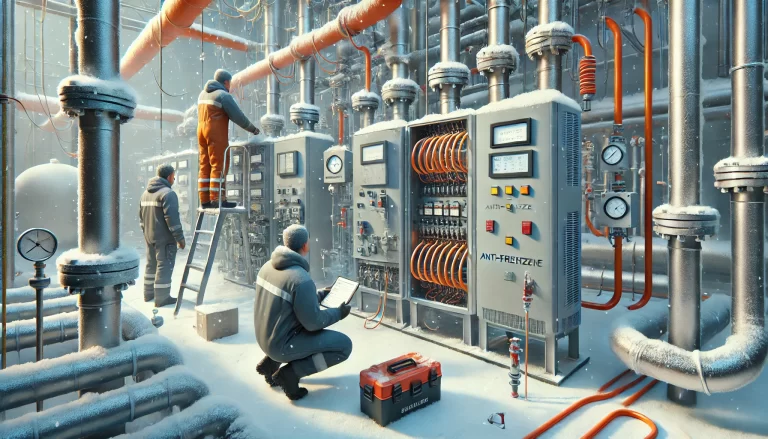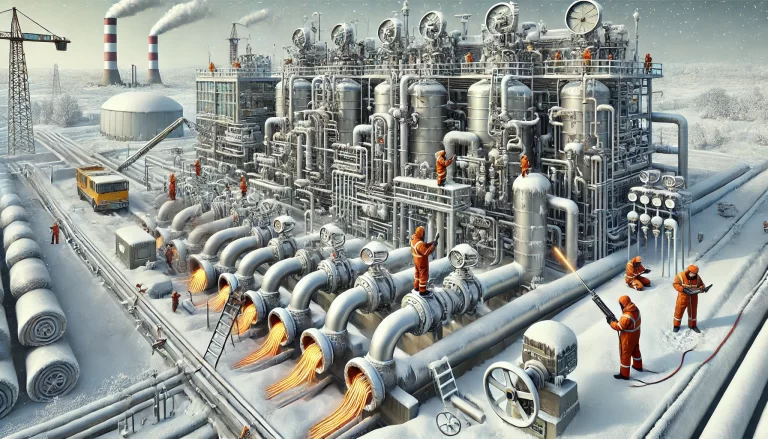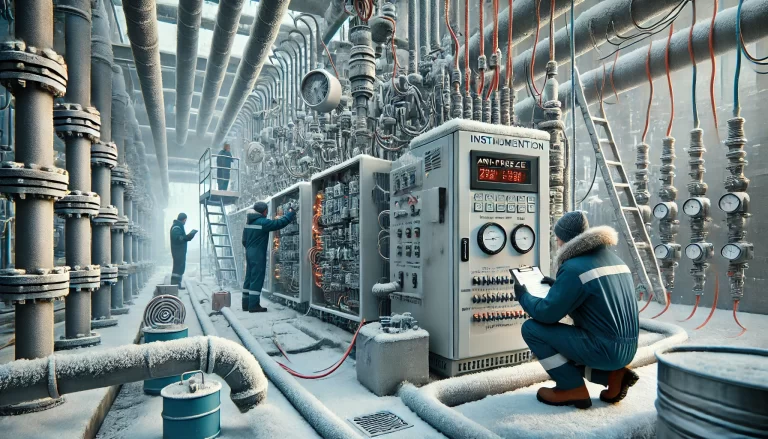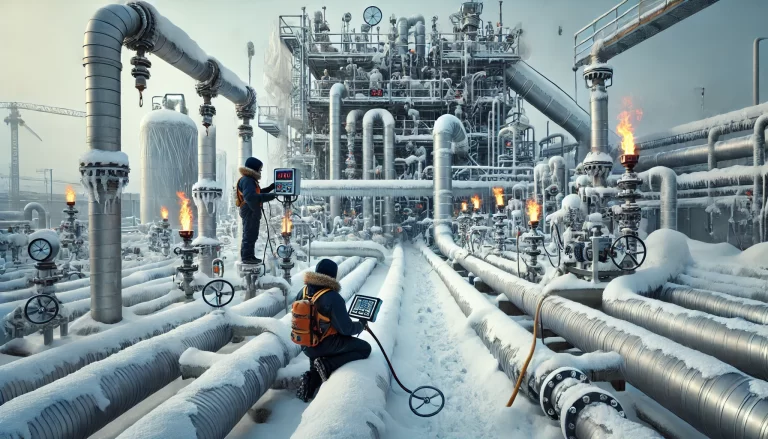Effective winter maintenance is critical to ensuring the proper operation of industrial instruments under challenging cold weather conditions. This document outlines the essential steps and precautions for maintaining instruments during the winter season. The guidelines are divided into key sections for clarity and practicality.
1. Daily Maintenance with Anti-Freeze and Anti-Coagulation Measures
Restoration of Insulation: After completing routine maintenance that requires removing insulation, it must be promptly restored. If insulation cannot be immediately replaced due to process requirements, the team leader should coordinate with process personnel to ensure restoration as soon as possible. Maintaining proper insulation is vital to preventing freezing.
Isolation Liquid for Instruments: Ensure that instruments requiring isolation liquid are pressurized to the rated level before use. Failure to do so can cause process media backflow, leading to pipeline freezing.
Inspection: Conduct routine inspections to check the condition of all instruments. Identify and address any potential risks or issues immediately.

2. Timely and Effective Heat Tracing Maintenance
Heat Tracing Standards: Ensure that all heat tracing systems are functional and meet the following standards:
Heat tracing lines must remain unobstructed and free from freezing.
Condensate must be drained promptly.
No water accumulation in heat tracing lines.
No steam leakage.
Inspection of Valves: For deactivated heat tracing systems, check the status of steam supply valves and drainage valves. Ensure no residual water is present.
Issue Resolution: Address any problems immediately. If immediate resolution is not possible, report the issue to the workshop and use proper tags to indicate the issue. Leaks and unresolved issues should be tagged for attention, and delays in addressing them will result in strict penalties.

3. Ensuring High-Quality Instrument Air Supply
Air Quality Control: The quality of instrument air is as critical as the heat tracing system for maintaining stable instrument operation.
Regularly drain the filters and pressure reducers of pneumatic valves in each unit.
During every shift, open the drain valve of the instrument air buffer tank to remove accumulated water.
Monitoring Air Dryers: Continuously monitor the performance of air dryers and provide timely feedback to the compressed air station if any issues arise.
4. Special Measures for Key Areas
Comprehensive Checks: Conduct thorough inspections of key areas, such as critical process lines and control instruments. Resolve issues immediately or report them to the workshop for prompt action. Do not leave any hidden risks unaddressed.
Key Instrument Monitoring: Important instruments may experience increased fault rates after prolonged operation. To reduce production downtime and ensure reliability, perform the following tasks regularly:
Calibration of instruments.
Draining condensate and refilling isolation liquid in pressure lines.
Inspecting and maintaining valves and connections.
Deactivated Instruments: For instruments not in use, ensure that drain valves are in the open position and check for residual water accumulation.

5. Spare Parts and Inventory Management
Inventory Review: Conduct a detailed review of spare parts for critical areas and specialized equipment. Submit procurement plans for any missing parts.
Supplier Coordination: Maintain close communication with suppliers to ensure the availability of spare parts at all times.
6. Fire and Explosion Prevention
Explosion Prevention:
Use only explosion-proof tools when performing maintenance in explosion-prone areas.
Fire Safety:
Ensure all personnel are familiar with the use of fire extinguishers and other firefighting equipment.
Conduct regular inspections and maintenance of fire extinguishers to ensure they are in proper working condition.
7. Water Protection
Secure Connections: Promptly address any loose or detached cable connections to prevent water ingress.
Inspect Conduits: During inspections, pay special attention to cable conduits and junction boxes for any signs of damage or wear.

Additional Recommendations
Documentation: Maintain detailed records of inspections, maintenance activities, and any issues identified. This will help track recurring problems and ensure accountability.
Training: Provide regular training to personnel on winter-specific maintenance practices, including safety protocols and emergency procedures.
By following these guidelines, industrial facilities can effectively mitigate the risks posed by harsh winter conditions, ensuring safe and reliable instrument operation. Regular inspections, timely interventions, and proactive measures are essential to achieving this goal.
